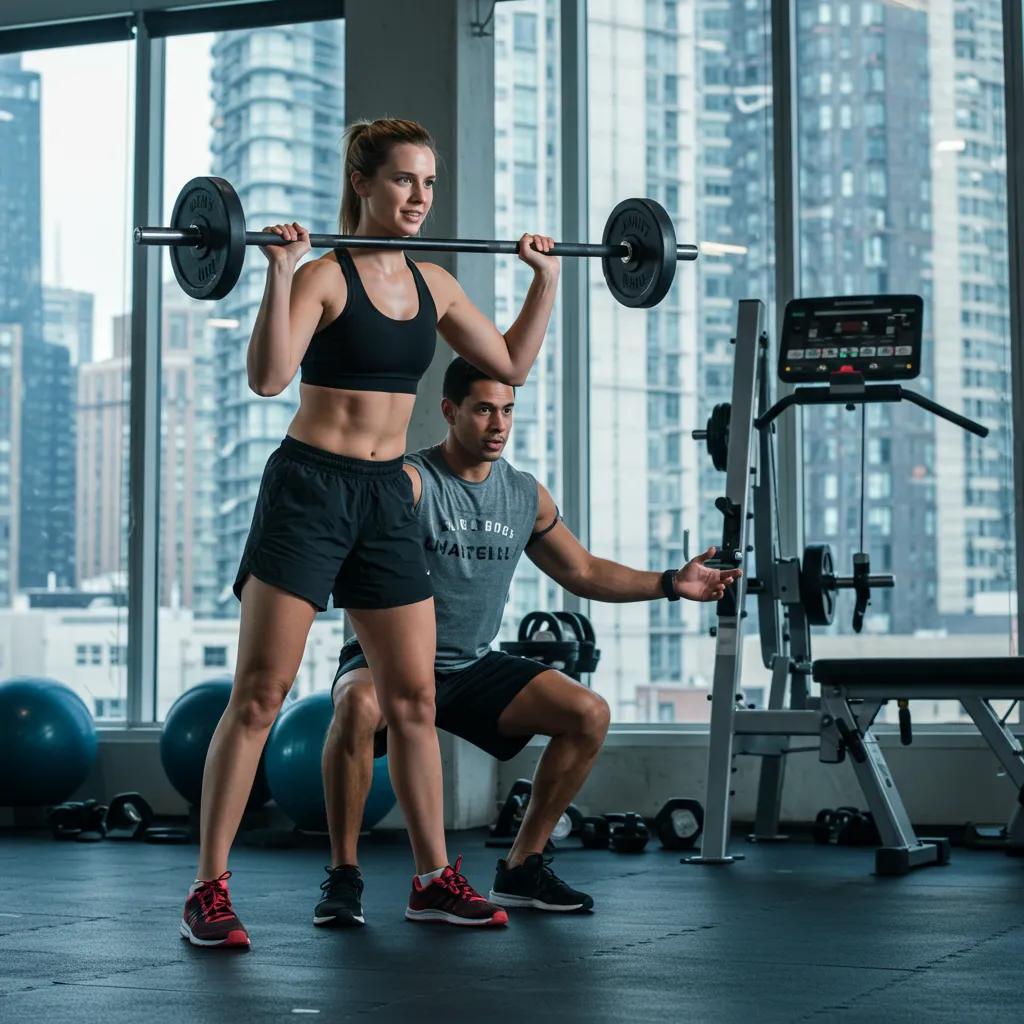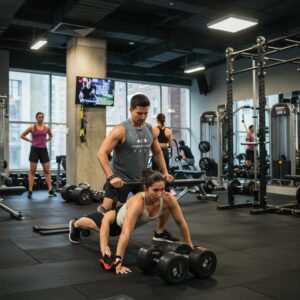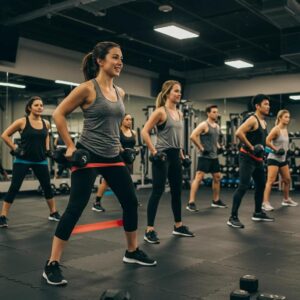Personal Training in River North Chicago demands a specialized approach that fuses sustainable strength building with enhanced joint flexibility to support urban lifestyles. This article addresses common plateaus and stiffness by outlining science-backed methods for progressive muscle adaptation, targeted mobility drills, and holistic nutrition strategies. You will learn why consistent resistance work matters, how mobility training safeguards joints, which coaching techniques yield personalized results, and what dietary practices optimize recovery. Read on to discover actionable steps to establish and maintain enduring strength and mobility in River North.
Why Is Long-Term Strength Training Essential for River North Chicago Residents?
Long-term strength training focuses on systematic resistance application that stimulates muscle hypertrophy, enhances connective tissue resilience, and promotes metabolic health. By systematically overloading musculature, residents can counteract sedentary habits, reduce back and knee pain, and elevate daily energy levels. Consistent weight-bearing exercises support bone density and postural alignment, crucial for navigating urban commuting and workplace demands.
What Are the Key Benefits of Sustainable Strength Training?
Strength training delivers multiple advantages that extend beyond aesthetic goals:
- Increased Functional Capacity – Enhanced ability to lift, push, and carry loads during everyday tasks without strain.
- Improved Metabolic Efficiency – Elevated resting metabolic rate through greater lean mass retention.
- Injury Resilience – Reinforced muscle-tendon units absorb impact and minimize wear on joints.
- Postural Stability – Stronger core and back musculature support spinal alignment in desk-bound routines.
These benefits create a foundation for mobility training by safeguarding structural integrity and energy reserves.
How Does Progressive Overload Support Lasting Strength Gains?
Progressive overload is the principle of gradually increasing resistance or volume to continually challenge muscle fibers and neural pathways. When weight or repetition increments are structured over weeks, the body adapts through micro-tears and repair, resulting in stronger, denser muscle tissue. This adaptive mechanism not only drives hypertrophy but also refines coordination and motor unit recruitment, preventing plateaus and sustaining progress over years.
Progressive Overload: Load vs. Repetition Progression for Muscle Adaptation
Progressive overload is a principle of resistance training exercise program design that typically relies on increasing load to increase neuromuscular demand to facilitate further adaptations. However, little attention has been given to another way of increasing demand—increasing the number of repetitions. This study aimed to compare the effects of two resistance training programs: (1) increasing load while keeping repetition range constantvs(2) increasing repetitions while keeping load constant. We aimed to compare the effects of these programs on lower body muscle hypertrophy, muscle strength, and muscle endurance in resistance-trained individuals over an 8-week study period.Progressive overload without progressing load? The effects of load or repetition progression on muscular adaptations, D Plotkin, 2022
Research indicates that both increasing load and increasing repetitions can effectively drive muscle adaptation and strength gains.
Load vs. Repetitions: Progressive Overload for Strength and Muscle Mass Gains
The aim of this study was to compare the effects of progressive overload in resistance training on muscle strength and cross-sectional area (CSA) by specifically comparing the impact of increasing load (LOADprog) versus an increase in repetitions (REPSprog). We used a within-subject experimental design in which 39 previously untrained young persons (20 men and 19 women) had their legs randomized to LOADprog and REPSprog. Outcomes were assessed before and after 10 weeks of training. Muscle strength was assessed using the one repetition maximum (1RM) test on the leg extension exercise, and the CSA of the vastus lateralis was assessed by ultrasonography. Both protocols increased 1RM values from pre (LOADprog: 52.90±16.32 kg; REPSprog: 51.67±15.84 kg) to post (LOADprog: 69.05±18.55 kg, REPSprog: 66.82±17.95 kg), with no difference between them (P+>+0.05). Similarly, both protocols also increased in CSA values from pre (LOADprog: 21.34±4.71 cm²; REPSprog: 21.08±4.62 cm²) to post (LOADprog: 23.53±5.41 cm², REPSprog: 23.39±5.19 cm²), with no difference between them (P+>+0.05). In conclusion, our findings indicate that the progression of overload through load or repetitions can be used to promote gains in strength and muscle hypertrophy in young men and women in the early stages of training.Effects of resistance training overload progression protocols on strength and muscle mass, Unknown Author, 2024
Which Functional Strength Exercises Improve Everyday Movement?
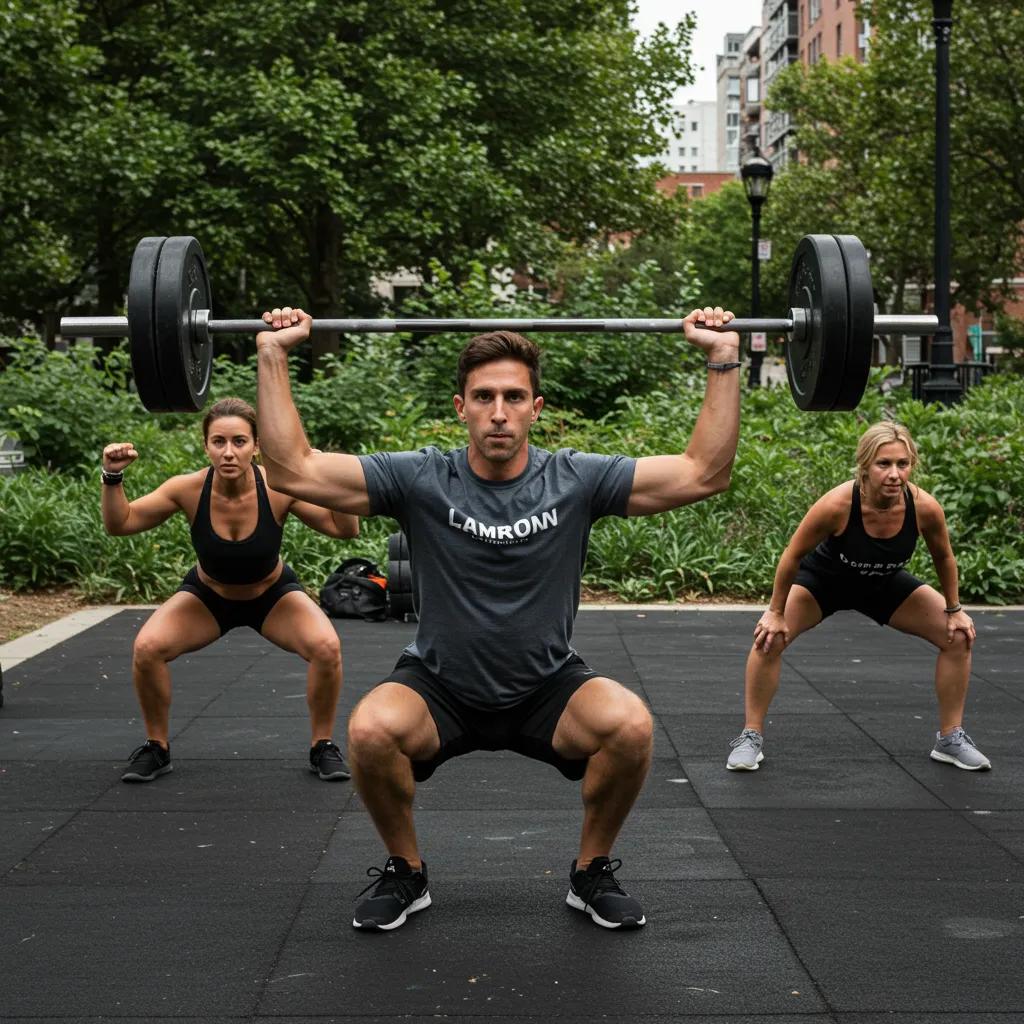
Below is a table highlighting key functional movements that reinforce daily activities and urban demands in River North:
| Exercise | Target Movement | Primary Benefit |
|---|---|---|
| Goblet Squat | Sit-to-stand | Strengthens quads and core stability |
| Single-Leg Deadlift | Balance and hinge | Enhances posterior chain and proprioception |
| Overhead Press | Reach and lift | Builds shoulder stability and posture |
| Farmers Carry | Grip and carry | Improves hand strength and spinal support |
Each movement translates directly into tasks like carrying groceries up stairs, preventing muscle imbalances that can lead to compensatory injuries.
How Can Mobility Training Enhance Joint Health and Flexibility in Chicago?
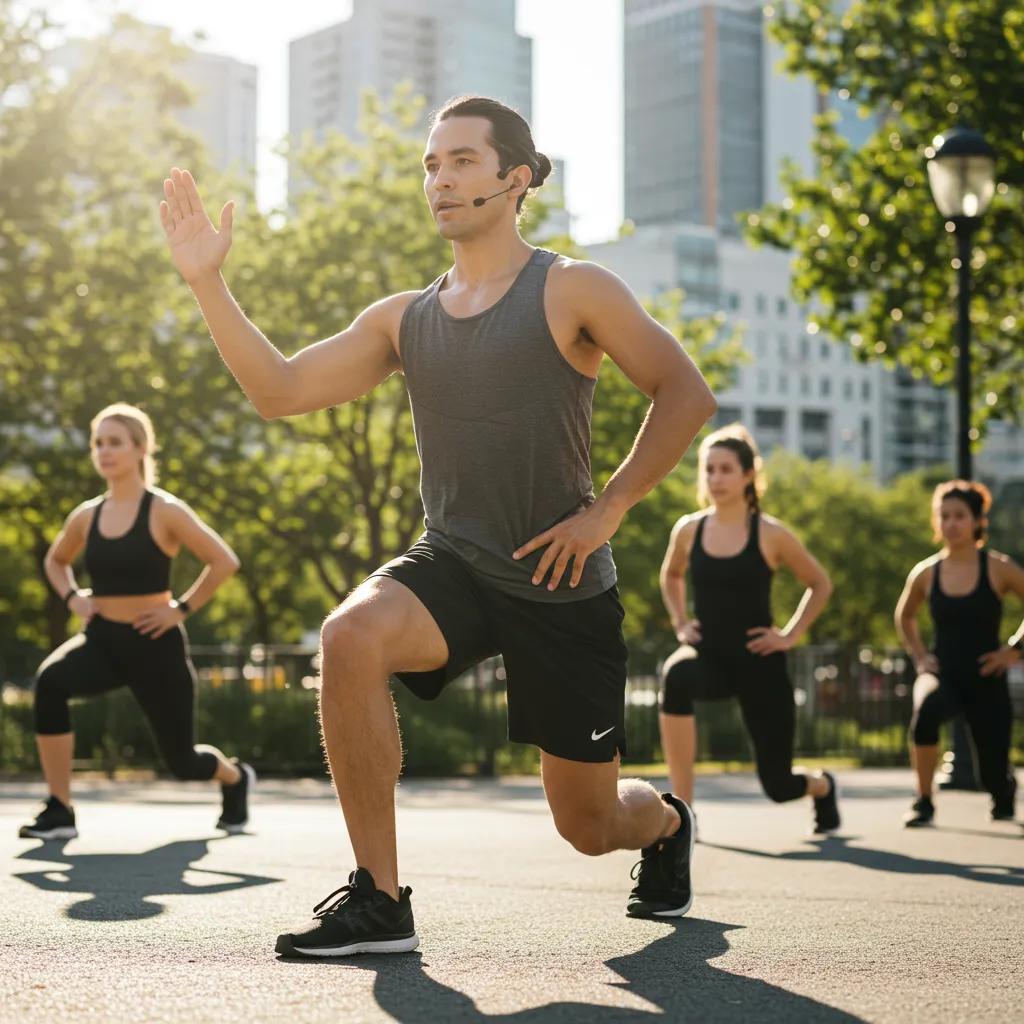
Mobility training encompasses dynamic and static drills designed to increase joint range of motion, optimize synovial fluid distribution, and maintain soft tissue elasticity. Enhanced flexibility reduces compressive forces in the shoulders, hips, and spine, translating into smoother gait, improved lifting mechanics, and decreased chronic aches. Urban living demands strong mobility to offset long periods of sitting, making this work essential for injury prevention and overall vitality.
What Are Effective Mobility Drills to Increase Range of Motion?
Below is a list of targeted drills proven to restore joint freedom:
- Perform hip-hinge lunges with controlled descent to open hip flexors and glutes.
- Include thoracic rotation reaches on hands and knees to mobilize the upper back.
- Integrate ankle dorsiflexion stretches against a wall to support squat depth and foot stability.
- Add dynamic shoulder circles with band-assisted tension to maintain rotator cuff health.
How Does Improved Mobility Prevent Injuries and Support Recovery?
Enhanced mobility improves movement patterns by aligning muscle-joint interactions, which lowers the risk of tendon overuse and compensatory strain. When joints move freely, soft tissues distribute loads evenly, reducing focal stress and microtrauma. Regular mobility work also accelerates post-workout recovery through increased blood flow and nutrient exchange, fostering resilience in muscles and connective tissues.
Resistance Training for Functional Mobility and Strength Optimization
There are many benefits to the addition of exercise to cancer treatment and survivorship, particularly with resistance training regimens that target hypertrophy, bone mineral density, strength, functional mobility, and body composition. These goals are best achieved through a series of individualized high-intensity compound movements that mirror functional mobility patterns and sufficiently stress the musculoskeletal system. As a result of adequate stress, the body will engage compensatory cellular mechanisms that improve the structural integrity of bones and muscles, stimulate metabolism and the immune system, optimize functional performance, and minimize mechanical injury risk. The current evidence suggests that application of the above exercise principles, practiced in a safe environment under expert observation, may offer patients with cancer an effective means of improving overall health and cancer-specific outcomes. The following article poses several important questions certified exercise specialists and physicians should consider when prescribing resistance exercise for patients with cancer.Resistance training for patients with cancer: a conceptual framework for maximizing strength, power, functional mobility, and body composition to optimize health and …, CE Champ, 2023
Resistance training, when tailored to functional mobility patterns, can significantly enhance overall physical resilience and optimize health outcomes.
What Personalized Training Approaches Do River North Personal Trainers Use?
Personal trainers in River North Chicago craft individualized protocols that blend objective assessments, client goals, and lifestyle constraints into cohesive exercise plans. Custom programming begins with movement and strength screenings to identify imbalances, then prescribes progressive resistance, mobility optimization, and periodized intensity for measurable gains. This tailored methodology ensures each session aligns with long-term strength and flexibility ambitions.
How Are Custom Programs Designed for Individual Strength and Mobility Goals?
Programs are structured in phases:
- Assessment Phase – Evaluate posture, mobility, and baseline strength through specific tests.
- Foundation Phase – Establish stability via corrective exercises and low-load conditioning.
- Progression Phase – Introduce incremental resistance and complex movement patterns.
- Maintenance Phase – Rotate exercises and intensity to prevent plateaus and overtraining.
This phased approach synchronizes physiological adaptation with client schedules and urban stressors.
What Role Do Certified Trainers Play in Long-Term Fitness Success?
Certified trainers bring expertise in exercise science, biomechanics, and injury prevention. Their credentials ensure proper form coaching, load progression management, and real-time modification for client safety. Trainers also serve as accountability partners, leveraging behavior-change strategies that reinforce consistency and motivation over months and years.
How Does Nutrition Support Long-Term Strength and Mobility in River North?
Nutrition underpins muscle repair, joint lubrication, and energy sustainment. A diet rich in high-quality protein, healthy fats, and micronutrient-dense produce delivers essential amino acids for muscle synthesis and antioxidants to mitigate inflammation. Proper fueling amplifies training adaptations and maintains joint cartilage health, directly enhancing both strength development and mobility outcomes.
What Are the Best Nutrition Strategies for Muscle Growth and Recovery?
Consider this overview of key nutritional strategies:
| Nutrient/Strategy | Function | Outcome |
|---|---|---|
| Lean Protein (20–30 g) | Muscle protein synthesis | Accelerates fiber repair and growth |
| Omega-3 Fatty Acids | Anti-inflammatory support | Promotes joint comfort and resilience |
| Complex Carbohydrates | Stable glycogen supply | Sustains workout intensity and aids recovery |
| Hydration with Electrolytes | Cellular fluid balance | Enhances nutrient transport and joint lubrication |
How Does Hydration Impact Performance and Mobility?
Adequate hydration maintains synovial fluid viscosity, which cushions articulating surfaces and reduces friction during movement. Proper fluid balance also supports thermoregulation, nutrient delivery, and muscle contraction efficiency. Dehydration impairs joint lubrication and metabolic processes, leading to stiffness, slower recovery, and decreased training intensity.
What Are Common Questions About Personal Training for Long-Term Fitness in River North?
While pricing and credentials vary, a focused long-term program always emphasizes consistent coaching, progressive planning, and holistic support. Understanding cost structures, certification standards, and onboarding steps helps residents make informed decisions that align with fitness commitments.
How Much Does Personal Training Cost in River North Chicago?
Personal training rates reflect session length, trainer expertise, and program customization. Typical investments range from moderate group-training packages to premium one-on-one plans. Regardless of tier, transparent pricing matches clear value in individualized testing, ongoing adjustments, and accountability structures.
What Certifications Should Personal Trainers Have in Chicago?
Reputable trainers hold national certifications from recognized bodies that emphasize exercise science, anatomy, and safety protocols. Accreditation through organizations that require continuing education ensures coaches remain current with evidence-based practices. This foundational knowledge translates into safer, more effective programming.
How Can I Start a Long-Term Strength and Mobility Program?
Begin by scheduling an initial assessment that quantifies mobility restrictions, strength baselines, and personal objectives. From this data, a customized plan can be developed to progressively challenge the body while safeguarding joint health. Consistent monitoring and incremental adjustments guarantee sustained progress.
Personal training in River North Chicago thrives on structured progression, individualized coaching, and integrated nutrition to deliver lasting strength and flexibility. By combining progressive overload, targeted mobility drills, and tailored meal strategies under expert guidance, residents achieve resilient bodies equipped for daily demands. Embracing personalized protocols and certified expertise safeguards joints and muscles against urban stressors, making long-term fitness both attainable and sustainable.

